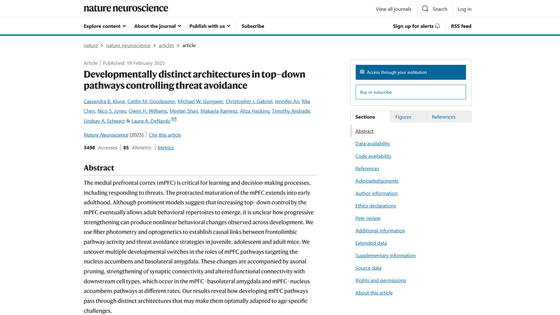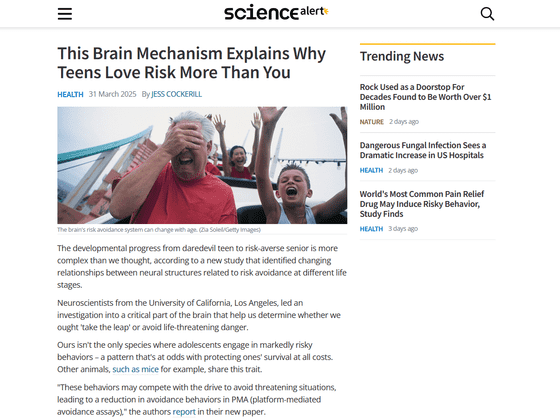Why are teenagers risk-averse? Why do older people become risk averse?

In general, teenagers are more likely to take risks and engage in dangerous behavior than older generations. A research team from the University of California, Los Angeles has reported that they have uncovered the reasons why young people take so many risks from the perspective of neuroscience.
Developmentally distinct architectures in top–down pathways controlling threat avoidance | Nature Neuroscience

This Brain Mechanism Explains Why Teens Love Risk More Than You : ScienceAlert

'These traits may lead to reduced avoidance behavior when faced with a
The research team first conducted an experiment using mice in which they were presented with a beep that reminded them of an electric shock while they were eating food. Young mice continued to eat the food for as long as possible despite the beep, whereas older mice immediately left the food when the beep was played and waited for the beep to stop.

The team then injected fluorescent molecules into the mouse brains to track the physiological functions that underpin these behaviors -- generally, the more fluorescent the molecule glows, the more intense the neural activity.
The analysis revealed that a part of the mouse brain called
According to the research team, when we are young, the basolateral amygdala (BLA), which is responsible for memories of fear and pain, is complex and intricate, so we sacrifice risk avoidance. However, as synaptic density gradually decreases with age, the BLA becomes more strongly connected to the nucleus accumbens (NAc), which is associated with aversion, and we become more proactive in avoiding risk than when we were younger.

However, the research team pointed out that 'the paucity of research on the causal functions of the dmPFC, BLA, and NAc circuits in the developing brain leaves significant gaps in our understanding of how the interactions between these regions generate developmental changes in risk-averse behaviors.' In addition, science media ScienceAlert pointed out that 'because this experiment was conducted in mice, it is not clear whether the patterns discovered in this study apply to humans.'
Related Posts:
in Science, Posted by log1r_ut







